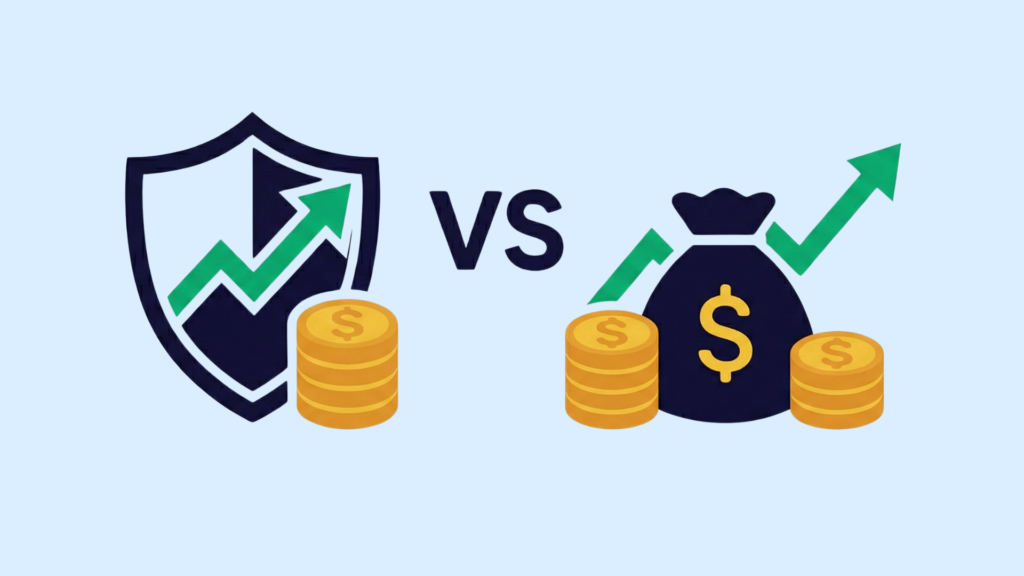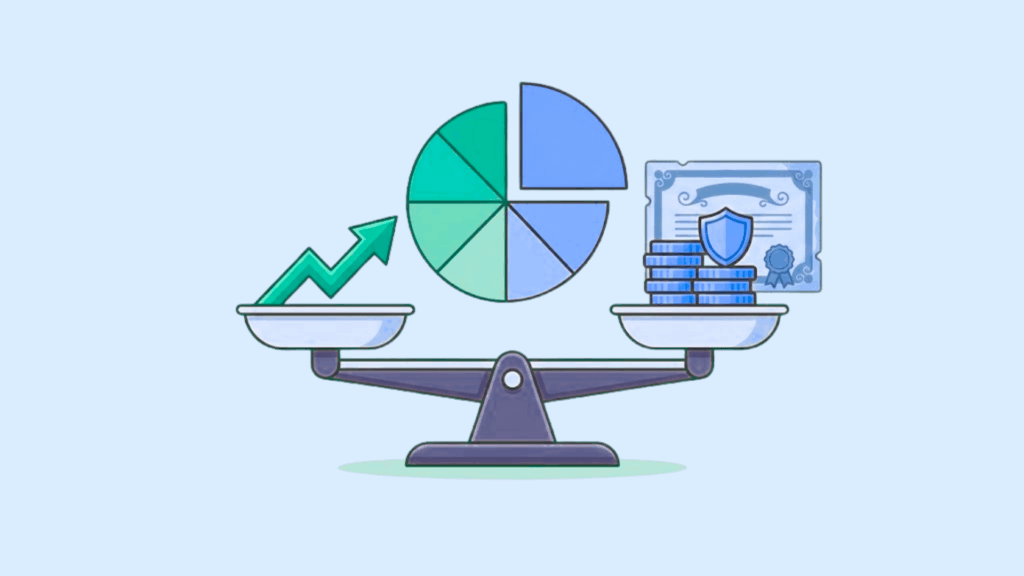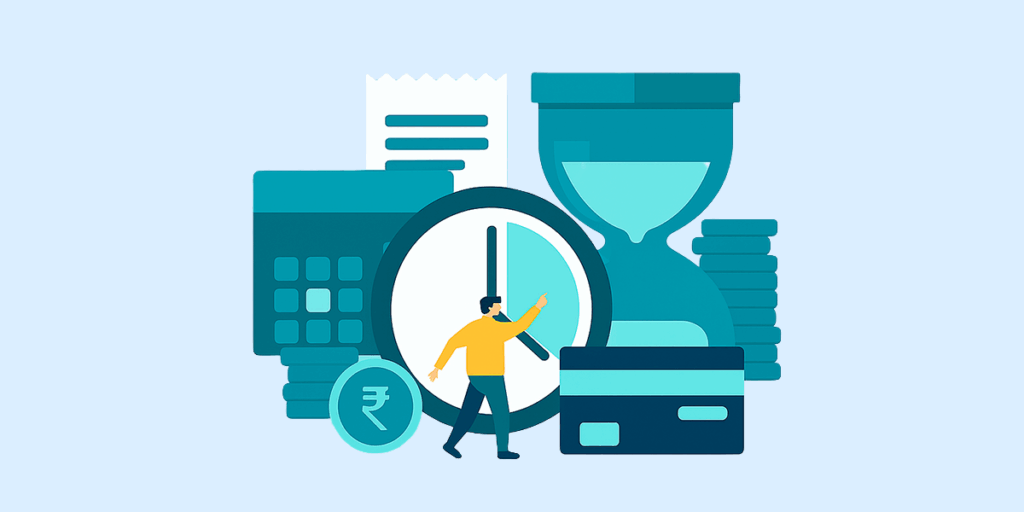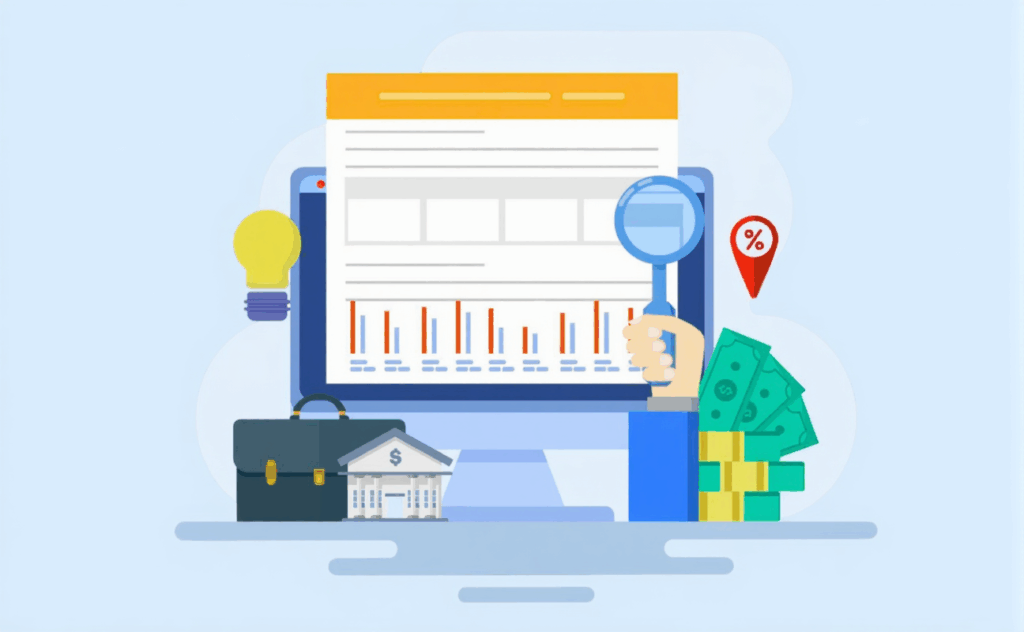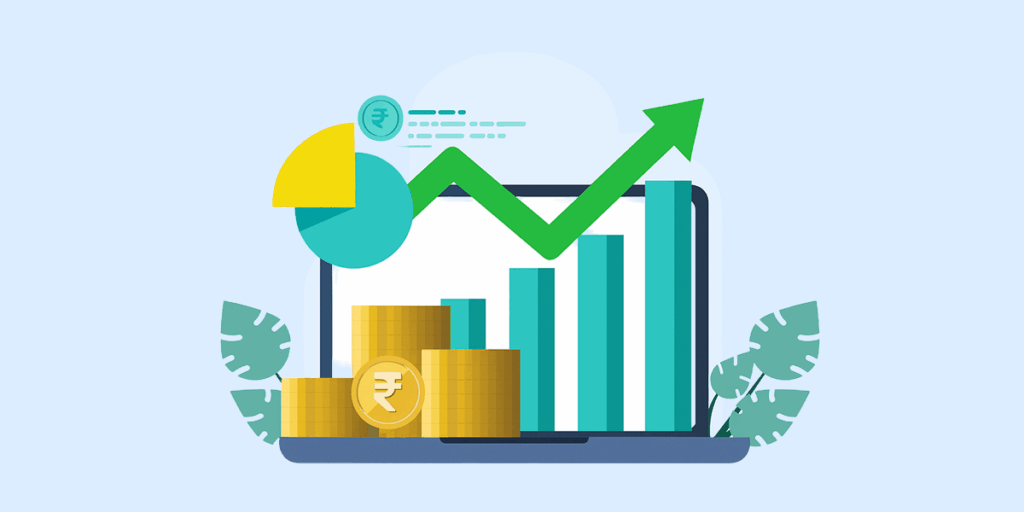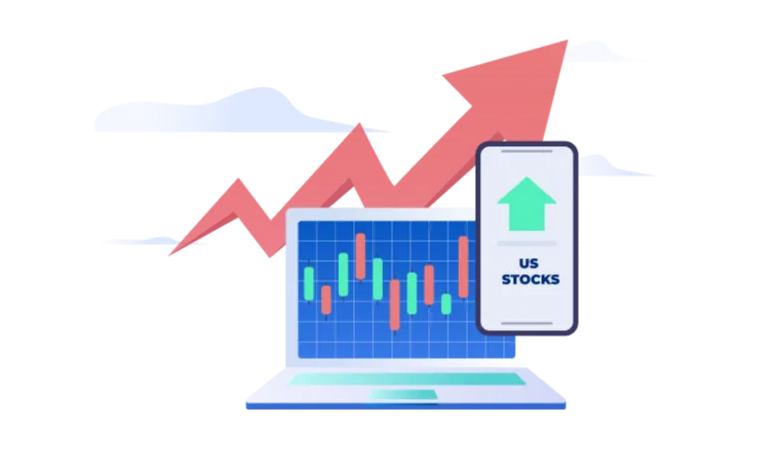Debt mutual funds are popular for conservative investors looking for stability and lower risk. Also, these primarily invest in fixed-income securities such as government bonds and treasury bills, making them less volatile than equity funds. Continue reading to learn more!
What are Debt Mutual Funds?
Debt mutual funds are investment vehicles primarily investing in fixed-income securities to generate income through interest payments on these securities. Compared to equity funds, which can be volatile, debt mutual funds are considered less risky, making them suitable for conservative investors.
Key Features of Debt Mutual Funds
When considering debt mutual funds, here are some key features to keep in mind:
Stability and Low Risk
Debt funds are more stable than equity funds and are less affected by market volatility. This makes them a good option for risk-averse investors prioritising safety over high returns.
Regular Income
One key benefit of debt funds is the potential for regular income through the interest generated from the bonds in the portfolio.
Tax Efficiency
Debt funds can offer better tax benefits than fixed deposits, especially if held for over three years. In such cases, they qualify for long-term capital gains tax with indexation, making them more tax-efficient.
Liquidity
Debt mutual funds are very liquid and can be redeemed within 1-2 working days, offering more flexibility than traditional fixed-income products.
Types of Debt Mutual Funds
Based on Maturity Period
The maturity period is when a debt instrument is due for repayment or maturity. Funds under this category are:
Overnight Funds
These funds invest in debt instruments with a one-day maturity period. They are considered extremely safe due to minimal interest rates and credit risk.
Liquid Funds
These funds focus on money market instruments maturing in up to 91 days. They usually offer higher returns than regular savings accounts, making them ideal for short-term investments.
Ultra Short Duration Funds
Investing in debt instruments with maturities between three to six months, these funds are suitable for low-risk investors looking for better returns than bank deposits.
Short Duration Funds
These funds invest in debt instruments with a maturity of one to three years. They balance risk and returns for short—to medium-term investors.
Long Duration Funds
With maturities of more than seven years, these funds carry higher interest rate risk but can offer better returns over the long term.
Dynamic Bond Funds
These funds invest in debt instruments of varying maturities, adjusting to market interest rate changes. This flexibility helps manage risk effectively.
Based on Credit Quality
Credit quality measures a borrower or issuer’s creditworthiness—the likelihood of default. It classifies debt mutual funds as:
Gilt Funds
These funds carry zero credit risk because they primarily invest in government securities. However, due to their longer maturities, they may face higher interest rate risk.
Corporate Bond Funds
These funds invest in high-quality corporate bonds, ensuring at least 80% of their investments are in highly rated securities.
Credit Risk Funds
By investing in lower-rated corporate bonds, these funds carry higher credit risk but offer better returns due to higher coupon (interest) rates.
Based on Investment Strategy
Lastly, consider how different investment strategies shape debt mutual funds:
Fixed Maturity Plans (FMPs)
These closed-ended funds invest in debt securities maturing on the same date, providing predictable returns but limiting flexibility for early withdrawals.
Banking and PSU Funds
These funds focus on debt instruments from banks and public sector undertakings (PSUs) and offer safety and moderate returns.
Floater Funds
These funds invest in floating-rate debt instruments, meaning the interest rates adjust according to market conditions. This feature helps reduce interest rate risk.
How Debt Mutual Funds Work
Debt mutual funds yield returns by investing in fixed-income securities like government and corporate bonds. These funds offer two main sources of income:
- Coupon income: Regular interest payments from the bonds in the fund.
- Capital gains: Profits from selling bonds when interest rates drop, as bond prices typically rise in such scenarios.
Moreover, fund managers assess credit ratings to choose bonds. Higher-rated bonds (like AAA) offer safety but lower returns, while lower-rated bonds carry higher risk and potential rewards.
Benefits of Investing in Debt Mutual Funds
Some of the most common debt mutual fund benefits are:
Capital Preservation
Debt mutual funds are usually less volatile than equities, making them ideal for conservative investors who prioritise safeguarding their principal while aiming for moderate growth. By investing in high-quality bonds, you can achieve a balance of stability and consistent returns.
Portfolio Diversification
While equities may provide higher returns, they also carry more risk. In contrast, debt mutual funds offer a cushion against market volatility, helping smooth out your portfolio’s performance over time.
Higher Liquidity
Unlike fixed or recurring deposits, debt funds don’t have long lock-in periods. You can redeem your investment quickly, providing flexibility when you need access to cash. This makes debt funds a great option if you’re looking for a liquid, low-risk investment that doesn’t tie up your money for long periods.
Risks Associated with Debt Mutual Funds
While debt mutual funds are often considered safer than equities, they are not without risk. These include:
Credit Risk
Credit risk is when the debt instrument issuer (such as a bond) fails to make timely interest or principal payments. This can lead to a loss in value for the debt fund. If you’re investing in funds that hold lower-rated bonds (those with a higher chance of default), the credit risk is even higher.
Interest Rate Risk
Interest rate fluctuations directly impact the value of the bonds held in debt funds. When interest rates increase, bond prices fall, which can reduce the fund’s net asset value (NAV). This is known as interest rate risk.
Liquidity Risk
Liquidity risk means the possibility that the fund may not have enough cash or easily sellable assets to meet redemption requests, particularly during periods of market stress. If many investors pull out their money simultaneously, the fund may struggle to liquidate its holdings without incurring losses.
How to Choose the Best Debt Mutual Fund?
Each fund caters to different investor profiles, so aligning your choices with these factors will help you make smarter investment decisions. Below, you’ll find practical tips on evaluating and picking the most suitable debt mutual fund.
Assess Your Investment Horizon
If you plan to invest for a short period, such as a few months to a year, consider liquid or short-duration funds. These are designed for short-term goals and offer liquidity along with stable returns.
Funds like dynamic bond funds or long-duration funds might be a better fit for long-term goals. They typically offer higher potential returns, though they carry more risk.
Understand Risk Tolerance
If you’re a conservative investor, you might prefer safer options like gilt funds or corporate bond funds. These funds are less volatile and generally lower in risk but offer more modest returns.
On the other hand, if you’re comfortable taking on more risk for higher returns, you can consider credit risk funds, which invest in lower-rated securities but offer a higher yield.
Analyse Past Performance
While past performance doesn’t guarantee future results, it’s still a useful metric when evaluating debt mutual funds. Also, look at how the fund has performed in different market conditions and check the consistency of its fund manager.
How to Invest in Debt Mutual Funds?
Investing in mutual funds in debt is simple, and platforms like Appreciate make it even easier with a streamlined process. Here’s a step-by-step guide to help you begin your journey:
- Open an Account: Download the Appreciate app and create an account if you don’t already have one. Ensure that you’re KYC (Know Your Customer) compliant for investing.
- Explore Fund Options: Head over to the “Invest” section, where you’ll find a variety of mutual funds for debt. You can filter options based on your risk appetite and investment horizon.
- Choose the Right Debt Fund: Select a mutual fund that aligns with your financial goals. Appreciate provides personalised recommendations to help you choose the best one.
- Make a Payment: Once you’ve selected your fund, decide how to invest—either through a one-time lump sum or an SIP.
- Track Your Investment: Appreciate allows you to easily monitor your portfolio. You can view performance statements and make adjustments as needed through the app.
Also Read: Equity Mutual Funds | Mutual Funds vs ETFs | Open Ended Mutual Funds
Direct Plans vs Regular Plans
Direct plans involve buying directly from the fund house, while regular plans are purchased through an intermediary, like a financial advisor. Below is a comparison of the two:
| Aspect | Direct Plan | Regular Plan |
| Expense Ratio | Lower expense ratio as no intermediary is involved. | Higher expense ratio due to commission to advisors. |
| Returns | Higher returns due to lower fees. | Slightly lower returns because of commissions. |
| Financial Guidance | No financial advisor is involved; decisions are on you. | Financial advisors provide guidance and support. |
| Investment Channel | Directly through the asset management company (AMC). | Through intermediaries like banks or advisors. |
SIP vs Lump Sum
Systematic Investment Plans (SIP) are ideal if you prefer making regular, smaller contributions over time, while a lump sum is best if you have a large amount of capital to invest upfront. Here’s how they compare:
| Criteria | SIP | Lump Sum |
| Investment Amount | Fixed, regular payments over time. | One large payment upfront. |
| Market Timing | Averages out market fluctuations. | Vulnerable to market fluctuations. |
| Cost Averaging | Benefits from cost averaging. | Does not benefit from cost averaging. |
| Flexibility | More flexible; easier to start small. | Less flexible, requiring more upfront capital. |
| Time Horizon | Better for long-term goals. | Suitable for short-term investments. |
Taxation of Debt Mutual Funds
The Union Budget 2024 has significantly changed how capital gains from debt funds are taxed—it now depends on whether the investment was made before or after April 1, 2023. Here’s a more elaborate explanation.
Short-Term Capital Gains (STCG)
If you sell your debt fund units within 24 months (2 years) of purchase, the capital gains are classified as short-term. These gains will be added to your taxable income and taxed as per your income tax slab rate. This rule applies regardless of whether you purchased the debt funds before or after April 1, 2023.
Long-Term Capital Gains (LTCG)
If you held your debt fund units for more than 24 months and purchased them before April 1, 2023, the gains qualify as LTCG. These are taxed at 12.5% without indexation benefits (profits made by investors adjusted for inflation). However, if you purchased the debt funds after April 1, 2023, LTCG taxation does not apply, and all gains are treated as short-term.
The Bottom Line
Debt mutual funds are a solid investment choice for risk-averse investors seeking stable returns. They invest in fixed-income securities, providing lower risk compared to equity funds while generating income through interest payments.
Plus, Appreciate stands out as a platform that simplifies your investment journey in debt mutual funds. We offer tailored investment options, expert insights, and user-friendly tools, ensuring you make informed decisions to grow your wealth effectively. Download the app now!
FAQs
What are debt mutual funds?
Debt mutual funds invest majorly in fixed-income securities like bonds, treasury bills, and commercial papers. They aim to provide stable returns by lending money to governments or corporations for a fixed interest rate.
How do debt mutual funds work?
Debt funds pool money from many investors to purchase fixed-income securities. The returns are generated from the interest earned on these securities and any capital gains from selling them.
What are the different types of debt mutual funds?
Debt funds come in various types, such as liquid, short-term, income, and gilt, each catering to different investment horizons and risk preferences. These categories are based on the maturity period and the type of debt instruments they invest in.
How safe are debt mutual funds compared to fixed deposits?
Debt mutual funds generally offer higher returns than fixed deposits but carry more risk. Unlike FDs, their returns can fluctuate based on market conditions, making them less predictable.
What are the risks associated with debt mutual funds?
Debt funds face risks like interest rate risk, credit risk, and liquidity risk. Changes in interest rates can influence the value of the underlying securities, and the debt issuer might default.
How are debt mutual funds taxed in India?
For investments held for less than two years, short-term capital gains are taxed based on your income slab. Long-term capital gains, held for over two years, are taxed at 12.5% with indexation benefits.
Which debt mutual funds are best for short-term investments?
Liquid funds and ultra-short-term funds are ideal for short-term investments. They typically offer liquidity and relatively stable returns. They invest in securities with shorter maturities, reducing risk.
Can I lose money in debt mutual funds?
Although debt mutual funds are relatively safer than equity funds, they still carry risks. A rise in interest rates or a default by the issuer can result in a decline in the value of your investment.
What is the ideal time horizon for investing in debt mutual funds?
The ideal time horizon depends on the type of debt fund. Short-term debt funds are suitable for one to three years, while long-term funds are better for over three years.
How do interest rates affect debt mutual funds?
When interest rates rise, bond prices decline, reducing the value of debt funds. Conversely, falling interest rates boost bond prices, increasing the returns of these funds.
Should I choose a debt fund or a bank FD for my savings?
Debt funds are better if you seek liquidity and potentially higher returns. However, fixed deposits offer more security for those who prefer safety and guaranteed returns.
How do I start investing in mutual funds in debt?
Start by opening an account with Appreciate, which offers access to various Indian and US mutual funds. Once your account is set up, choose a debt mutual fund based on your financial goals and start investing.
Disclaimer: Investments in securities markets are subject to market risks. Read all the related documents carefully before investing. The securities quoted are exemplary and are not recommendatory.



